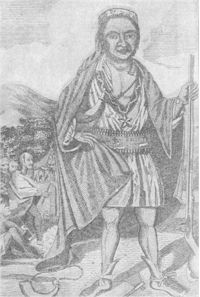Wahpeton Indians (wakhpe, ‘leaf’; tonwan (French nasal n), ‘a village’; hence probably ‘dwellers among leaves’). One of the 7 primary divisions of the Dakota. Historic and linguistic evidence proves the affinity of this tribe with the Sisseton, Wahpekute, and Mdewakanton. Hennepin (1680) mentions them as living in the vicinity of Mille Lac, Minnesota, near the Mdewakanton, Sisseton, and Teton. On his map they are placed a little to the northeast of the lake. Le Sueur (1700) places the Oudebatons, or “river village,” among the eastern Sioux, and the Ocapetons, “village of the leaf,” among the Sioux of the west. As … Read more

